Archaeologists find 3,000-year-old dishes in Ivano-Frankivsk, Ukraine
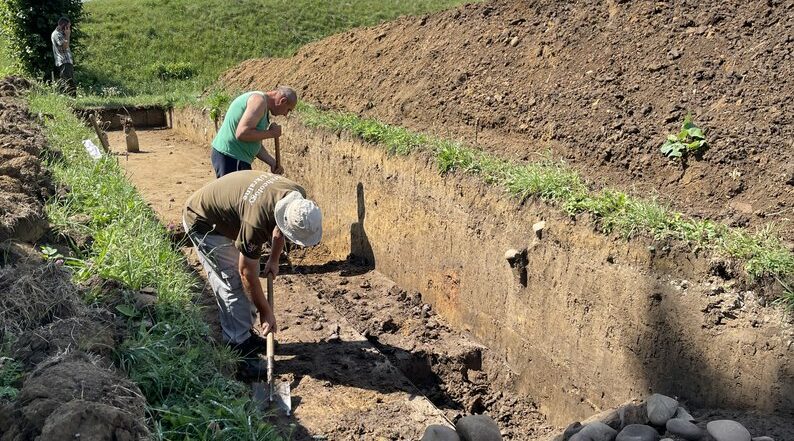
Photo: Suspilne Ivano-Frankivsk / Diana Korzhuk
A defensive rampart was found during excavations in the village of Krylos, located in the Ivano-Frankivsk region. This rampart surrounded a settlement from the early Iron Age and yielded dishes dating back to the 12th-9th centuries BC.
Suspilne reports this.
As Taras Tkachuk, head of the archeology department of the "Davnii Halych" reserve, said, the scientists initially wanted to investigate the defense structures of the princely era.
However, once the excavations commenced, it became clear that they had stumbled upon a shaft from the early Iron Age. The fortification appeared to be constructed of clay, river stones, and wood, likely encompassing the entire sizable settlement of that era.
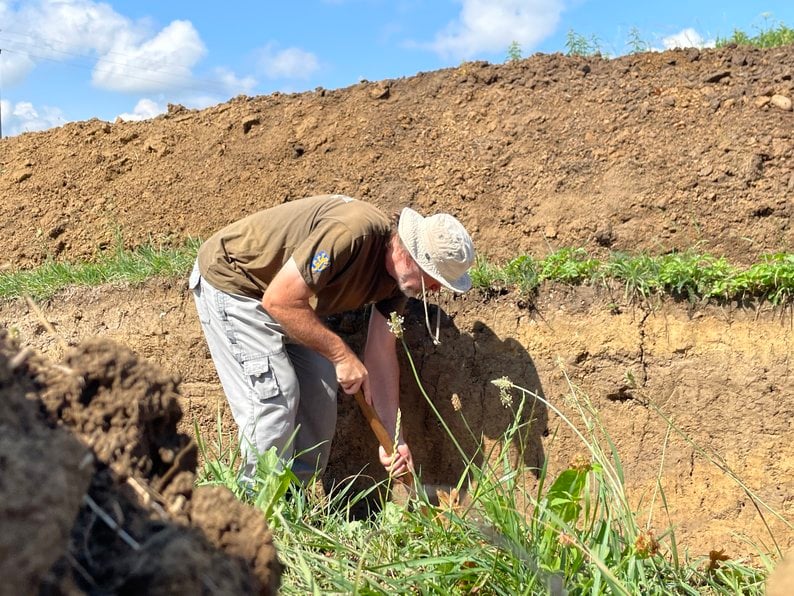
Photo: Suspilne Ivano-Frankivsk / Diana Korzhuk
"On the ramparts, there were necessarily upper defensive structures. It was obviously a palisade. Perhaps with towers to defend against neighbors and enemies,"Ihor Krekhovetskyi, a department scientist, noted.

Excavations in the village of Krylos near Halych, July 2024. Photo: Suspilne Ivano-Frankivsk / Diana Korzhuk
Some sections of the beam appear to have a reddish hue, which, according to Taras Tkachuk, suggests that there may have been a fire in this area.
"The river stones have traces of being in the fire. The earth is scorched. Here, there was a fire of some historical event, about which we can only guess," Tkachuk says.
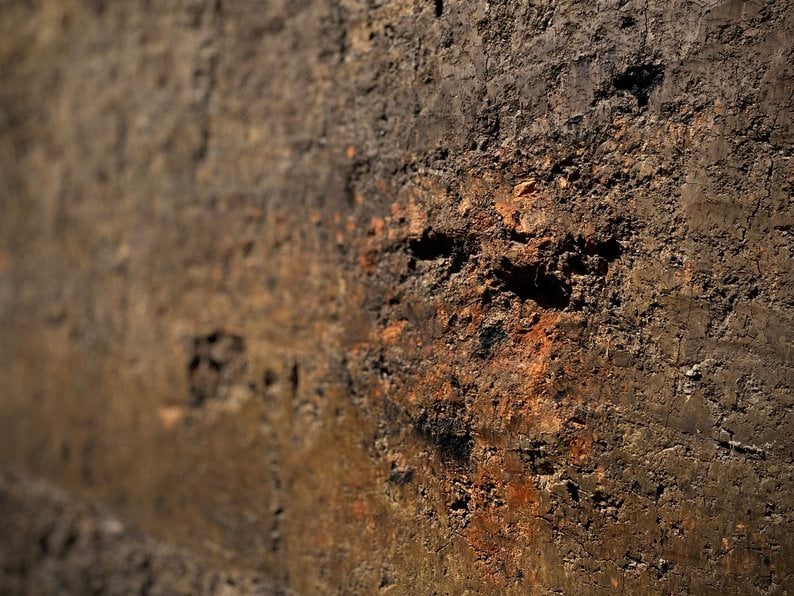
Some sections of the defensive rampart have a red tint, Krylos, July 2024. Photo: Suspilne Ivano-Frankivsk / Diana Korzhuk
Archaeologists believe that the Thracians most likely inhabited the area of Krylos between the 12th and 9th centuries BC. They were engaged in agriculture, cattle breeding, and salt mining.
On the other hand, the rampant defended the locals against attacks from neighboring settlements. In those days, wars were frequently fought, often due to disputes over the nearby communities' better crops, pastures, and domestic animals.
The researchers explain that the filling of yellow clay also indicates that the rampart was used in ancient Rus [note: not the same as Russia – ed.]. At that time, Krylos was the capital of the Galicia-Volhynia principality.
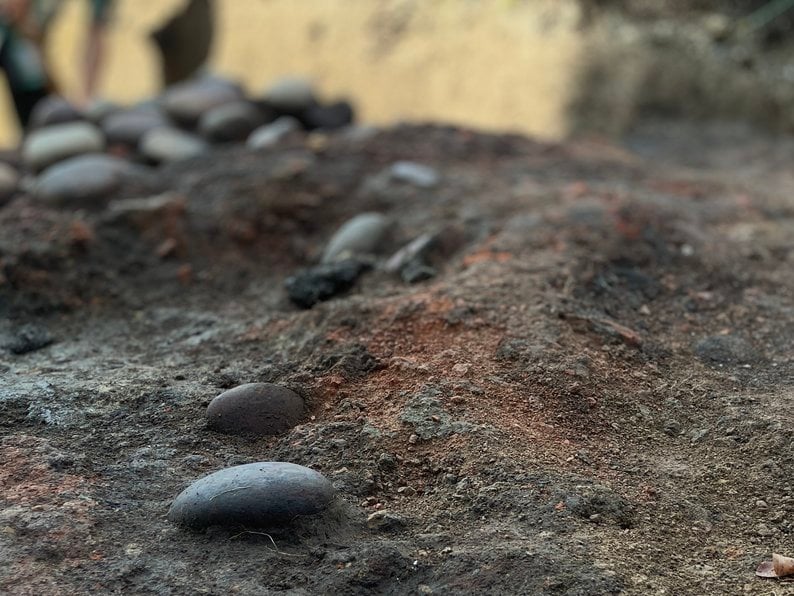
Photo: Suspilne Ivano-Frankivsk / Diana Korzhuk
Also, during the excavations, scientists discovered fragments of ceramic dishes from the early Iron Age.
"The rim of a jar, thick-walled dishes are typical ceramics for the early Iron Age. They were made of clay but without a potter's wheel. Obviously, such "sausages" were made from clay; they were placed on top of each other and smoothed. A vessel was produced, sometimes quite large; it could reach up to my waist," Tkachuk explained.
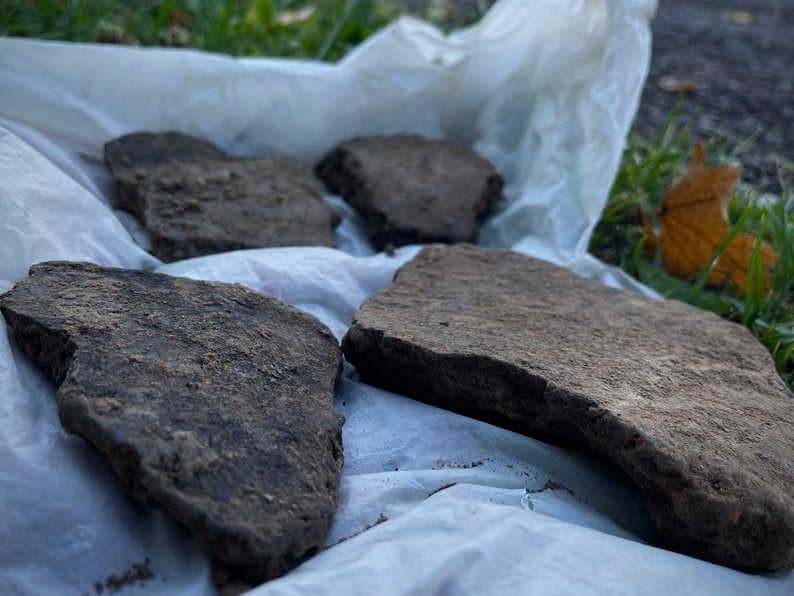
Early Iron Age pottery fragments, Krylos, July 2024. Photo: Ivano-Frankivsk Society / Diana Korzhuk
Furthermore, researchers also uncovered ancient Rus pottery in Krylos. It is notably thinner than Early Iron Age pottery and was crafted using a potter's wheel.
"This is pottery of the 11th-13th centuries of the Galician type. It was glazed. Galician type because it differs in ornamentation. The longitudinal lines in the Galician type were mostly below the rim, in the upper part of the vessel," Krekhovetskyi says.
According to Tkachuk, scientists will stay an additional month in Krylos to measure the thickness of the cultural layer and better understand the shaft's structure. They hope to discover other artifacts, specifically weapons, in addition to ceramics.
For reference:
In the temporarily occupied Crimea, Russian archaeologists and developers completely destroyed an authentic monument of world importance – the Tavrian Chersonesus. A new open-air theater was built in its place, and some archaeological finds were taken to Russian museums.




















































